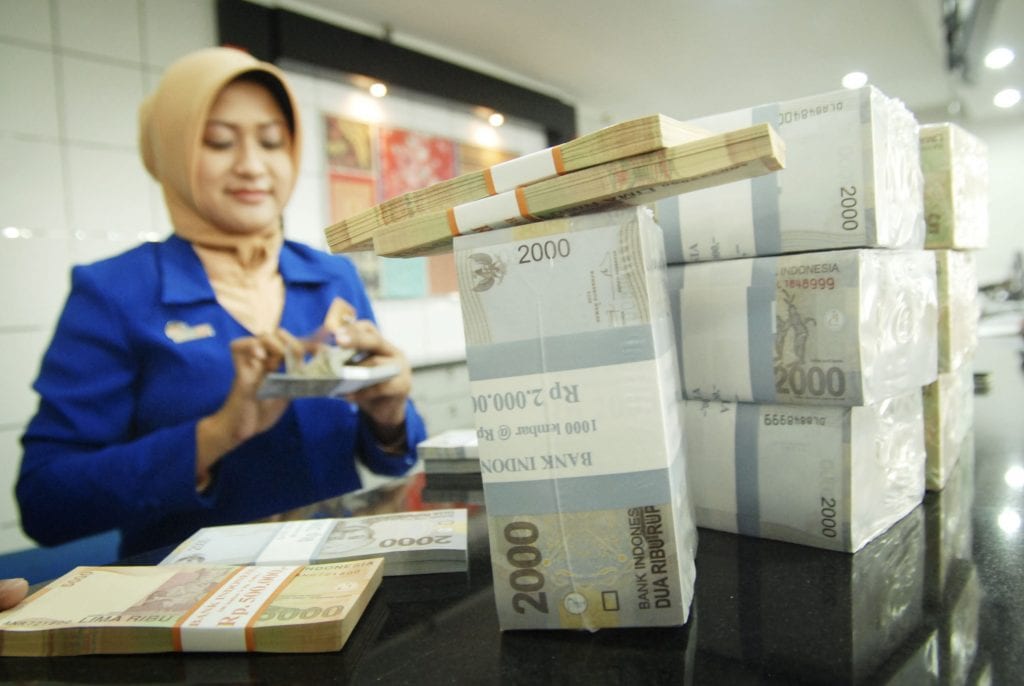
Rosmaya Hadi enlisted the help of 2,000 religious leaders to fight inflation when she ran Indonesia’s central bank in West Java region. In the world’s largest Muslim country, Hadi got them to spread a message of moderation in mosques on the eve of the Eid al-Fitr festival last year, when Indonesians usually step up spending on food and gift-giving to mark the end of the month of fasting. “Don’t shop excessively, don’t buy things at any price, it is good to haggle” they preached, she said.
“People may not listen if it’s the central bank speaking, so we had to find new approaches and rely on local leaders and the local wisdom,” Hadi said in her first interview since taking office in January as deputy governor at Bank Indonesia and the highest-ranking female official.
Hadi, 57, plans to use that same bottom-up approach in her new role. The career central banker who rose through the regional ranks is keenly aware that controlling inflation in the country of 250 million people dotted across more than 900 islands takes more than just setting interest rates.
“Often we form a clear policy in Jakarta but the implementation in the regions is less clear, so this needs to change,” Hadi said at her office in the capital, overlooking the iconic National Monument tower.
Making policy more effective has been a theme under Bank Indonesia Governor Agus Martowardojo. The bank overhauled its framework last year, adopting a new benchmark rate that would transmit adjustments more quickly to the economy.
Regional Expertise
While there’s been some success, banks haven’t passed on the full effect of last year’s 150 basis points of reduction in the benchmark: lending rates have fallen 112 basis points in the year through January, holding back credit growth at 7.9 percent last year — the slowest pace since the Asian financial crisis in 1999 — and capping economic growth at 5 percent.
Hadi’s promotion brings more regional expertise to policy-making in a country where inflation varies widely across provinces. In Papua, consumer prices fell 0.77 percent in February from a month earlier after Freeport-McMoRan Inc. halted production at the world’s second-largest copper mine following a dispute with the government; in Manado, North Sulawesi, the monthly inflation rate was 1.16 percent due to the rising cost of tomatoes, a key ingredient in the local cuisine.
For the country as a whole, consumer prices rose 0.23 percent in February and declined 0.02 percent in March.
“Bank Indonesia’s policy will now be more focused as earlier it only considered the national aggregate,” David Sumual, chief economist at PT Bank Central Asia, said by phone on Hadi’s appointment. “Jakarta and West Java may have the strongest economies, but it’s possible that smaller regions can possess systemic risk.”
The only board member who wasn’t educated at an overseas university, Hadi holds a law degree from Universitas Padjajaran in Bandung, West Java, and completed a master’s in social and political studies at the University of Indonesia.
She is the first deputy governor elected from a pool of regional heads, busting a myth that being sent to work at offices outside of Jakarta was to hit the glass ceiling, she said. She began her career at the central bank in 1985, and has held various roles including as head of the payment systems department, deputy director for internal finances and running the rupiah transactions office.
‘Different Perspective’
In her new role, she has pledged to ensure the bank does more to boost women’s participation in the economy. Like other Southeast Asian central banks, women are generally well-represented in senior positions compared to developed-world peers, such as the Reserve Bank of Australia and the U.S. Federal Reserve, but more can be done, she said.
“When you say having more women leaders is important because of the different perspective we bring, I am the case in point,” she said.
Bank Indonesia has had two women on the board previously: Siti Fadrijah was appointed deputy governor in 2005 and Miranda Goeltom held the role from 1997 before being named senior deputy governor in 2004. Both were named suspects in separate corruption cases. Fadrijah died in 2015 before she was given a verdict, while Goeltom served a three-year sentence that ended two years ago.
Cabinet Ministers
Women account for about 30 percent of the total workforce at Bank Indonesia and occupy 10 of the 33 executive director roles, the top spot below the board of governors, Hadi said.
Still, the labor participation of females in the wider economy lags: it was 51 percent in 2014, equal to countries in the Organisation for Economic Co-operation and Development, but lower than the 61 percent in East Asia and the Pacific, according to World Bank data. The economic gender gap cost the country more than 16 percent of its gross domestic product last year alone, the International Monetary Fund estimated.
“Some women have this mental block that keeps them from going full tilt, telling themselves to follow the husband or settling for good enough,” Hadi said. “But we’ve had a woman as president and we have women ministers, so the doors are open. Now it’s up to us to make the most of the opportunity.”
Nine of Indonesia’s 34 cabinet ministers are women, including Finance Minister Sri Mulyani Indrawati, State-Owned Enterprises Minister Rini Soemarno and Fisheries Minister Susi Pudjiastuti. Megawati Soekarnoputri, who chairs the Indonesian Democratic Party of Struggle that backs current President Joko Widodo, was the country’s first female president in 2001.
Bank Indonesia hasn’t yet had a woman at the helm. “It could be anybody,” Hadi said, laughing, when asked if she could be that person.

